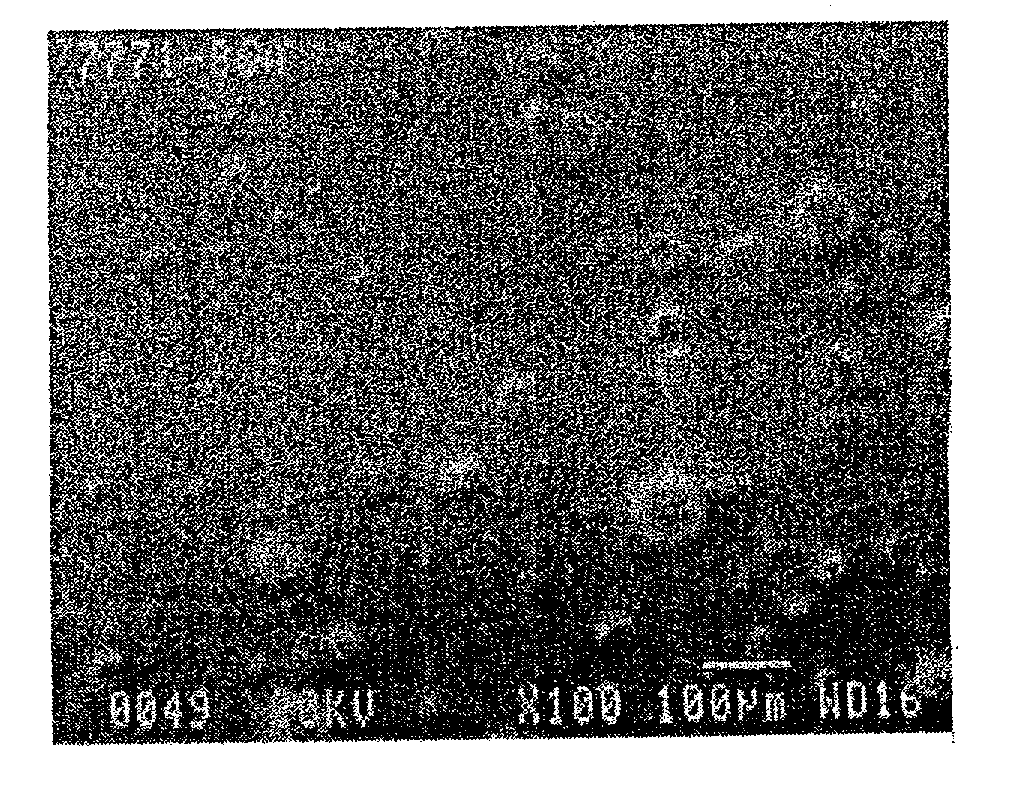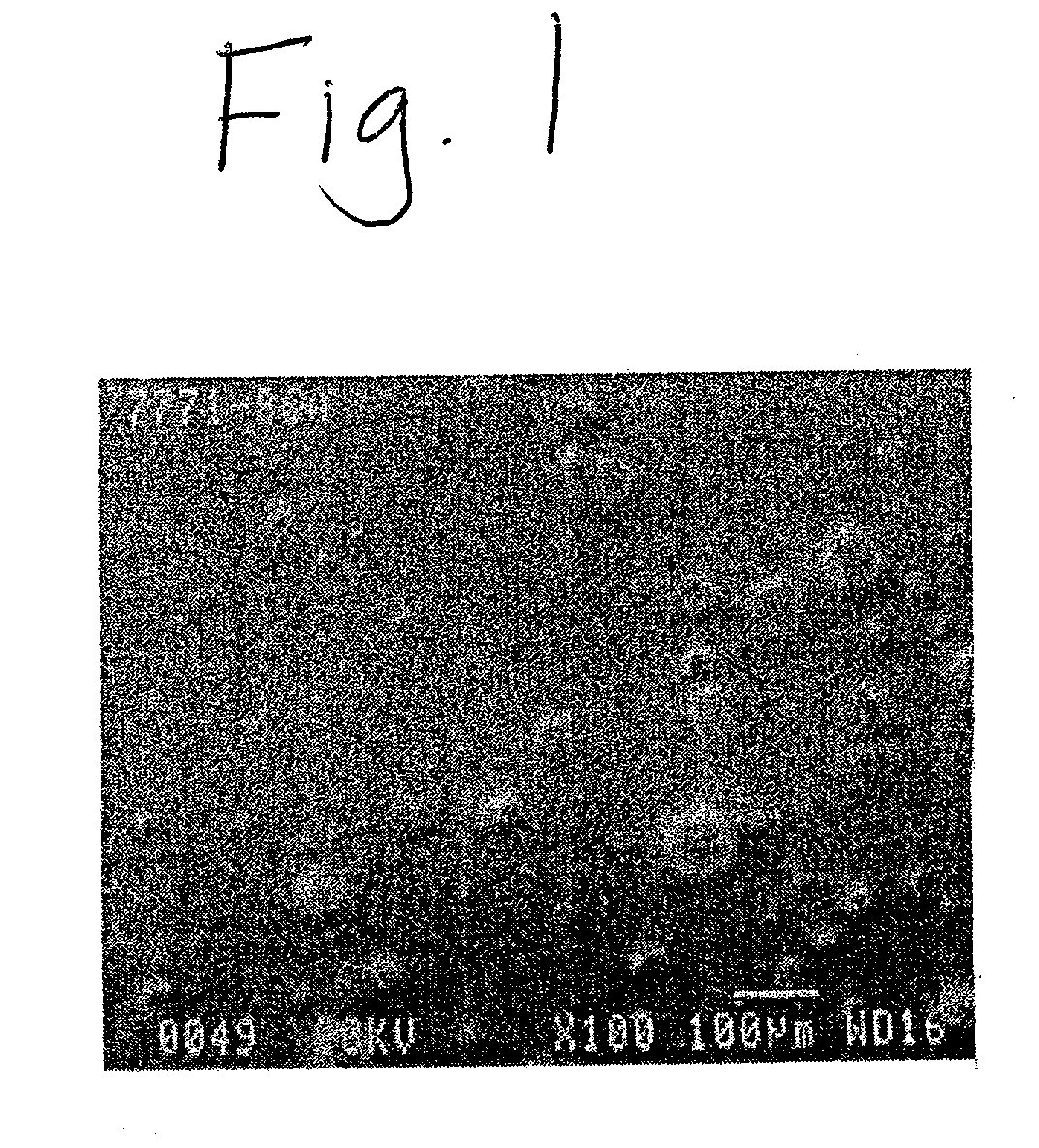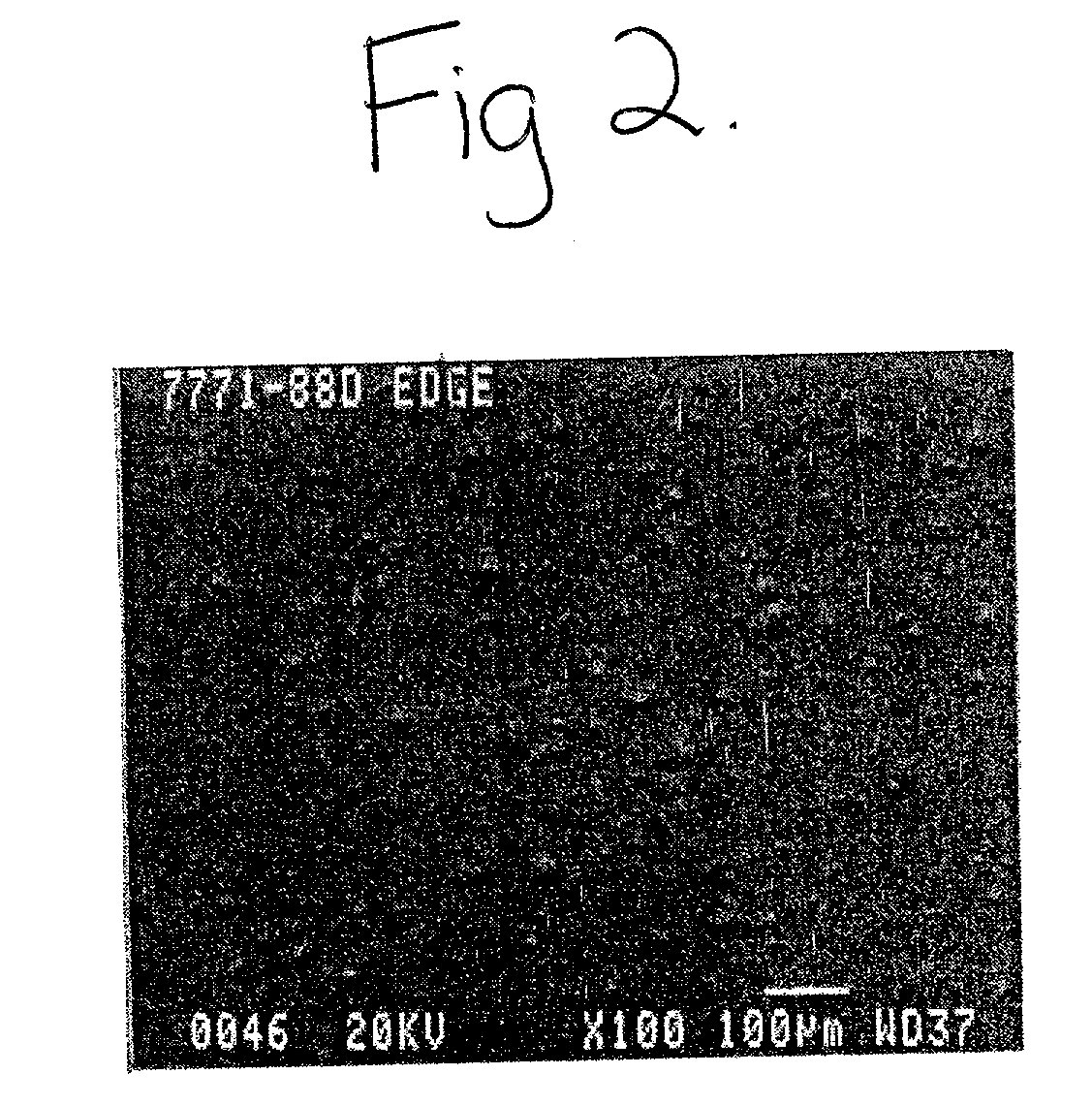Dispersible dielectric particles and methods of forming the same
- Summary
- Abstract
- Description
- Claims
- Application Information
AI Technical Summary
Benefits of technology
Problems solved by technology
Method used
Image
Examples
example 2
[0065] A composite layer including barium titanate-based particles distributed in a polymeric material was formed using one method of the present invention and characterized.
[0066] Barium titanate-based particles were hydrothermally produced and maintained in an aqueous mixture as described above in Example 1. The water in the aqueous mixture was replaced, in part, with ethanol using a filtration technique to form a non-aqueous mixture. The particles in the non-aqueous mixture were dried in a vacuum drier at 140.degree. C. The dried particles were subjected to a hammer milling step as described above in Example 2. A composite layer including the barium titanate-based particles distributed in a polymeric material was formed as described above in Example 1.
[0067] The surface of the composite layer was examined using a scanning electron microscope (SEM). FIG. 2 is an SEM photo at 100.times. of a representative area on the sample. The sample includes greatly reduced particle agglomerati...
PUM
| Property | Measurement | Unit |
|---|---|---|
| Percent by mass | aaaaa | aaaaa |
| Surface roughness | aaaaa | aaaaa |
| Surface roughness | aaaaa | aaaaa |
Abstract
Description
Claims
Application Information
 Login to View More
Login to View More - R&D
- Intellectual Property
- Life Sciences
- Materials
- Tech Scout
- Unparalleled Data Quality
- Higher Quality Content
- 60% Fewer Hallucinations
Browse by: Latest US Patents, China's latest patents, Technical Efficacy Thesaurus, Application Domain, Technology Topic, Popular Technical Reports.
© 2025 PatSnap. All rights reserved.Legal|Privacy policy|Modern Slavery Act Transparency Statement|Sitemap|About US| Contact US: help@patsnap.com



